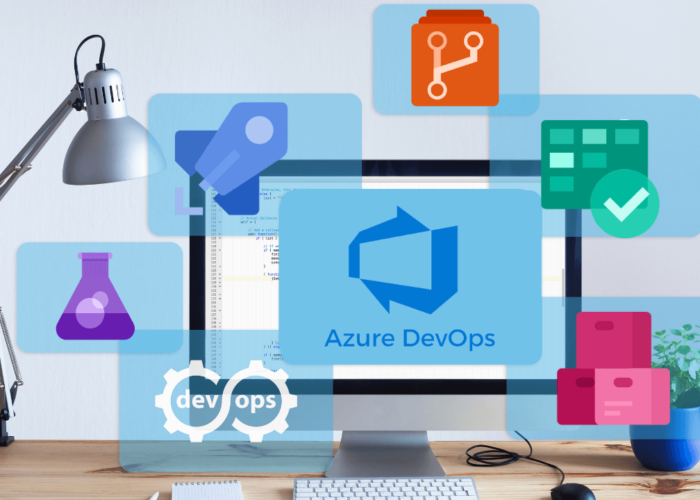In today’s software development landscape, monolithic architectures and microservices have become two major architectural approaches. Both models have a significant impact on the efficiency, scalability and maintainability of applications. If you’ve been wondering how DevOps relates to a monolithic architecture vs microservices, you’re in the right place to find answers.
In this article, we will explore in detail the differences, advantages and disadvantages of monolithic vs microservices architectures. We’ll understand how each approach addresses the challenges of software development, allowing you to evaluate which approach might be the best choice for your project. From the simplicity and integration of components into a single unit, characteristic of monolithic architectures, to the modularity and service-independent scalability of microservices, we will look at each key aspect. By the end of this article, you will have a clearer picture of how to choose the right architecture and how DevOps relates to these architectural decisions.
What is a monolithic architecture?
A monolithic architecture is a style of software architecture in which an application is developed as a single indivisible unit or component, characterised by the use of a single code base for its services or functionalities. In this approach, all components and functionalities of the application are interconnected and deployed together as a single entity in a runtime environment.
In a monolithic architecture, the application is compiled and deployed as a single file or a set of interdependent files. All functional aspects, such as business logic, user interface, data access and other services, are packaged and executed within the same process.
The components of a monolithic architecture communicate directly with each other through internal function or method calls. The monolithic application generally runs on a single server or instance, which means that there is no physical or logical separation between the different components of the application.
This approach is common in traditional and legacy applications, where all functionality is tightly coupled and relies on a single code base. While it may be easier to develop and deploy initially, a monolithic architecture can become more complex and difficult to maintain as the application grows in size and complexity.
What are microservices?
In contrast to these monolithic applications, microservices have emerged. A very effective option that is captivating many software developers, and no wonder!
“Microservices architecture seeks to isolate the different components of any application, so as to make each one of them into a separate app on itself.”
Microservices are an evolution of Service Oriented Architecture or SOA, whose function is based on developing independent services for the business, each of these being associated or linked to a single application.
In contrast to monolithic architectures, where all components are tightly coupled into a single unit, microservices promote the decomposition of the application into smaller, isolated services, which communicate with each other through well-defined interfaces, such as APIs.
Each microservice is responsible for a specific functionality and can be developed using different technologies and programming languages, which facilitates the adoption of new technologies and the choice of the most appropriate tools for each service.
-Do you want to know how to implement microservices in a large company? Find out here.
You may now have a better understanding of the relationship between DevOps and microservices. Well, they are two practices whose purpose is based on offering maximum agility and operational efficiency to the organisation. In fact, “DevOps” is widely seen as the piece that microservices need to achieve the highest levels of perfection.
“Many people regard “DevOps” as the key that microservices need to achieve the highest levels of perfection.”
Monolithic Architecture vs Microservices: Main Differences, Advantages and Disadvantages
In order to understand the main differences between monolithic architecture and microservices, it is important to know the advantages and disadvantages of each.
Advantages and benefits of a Monolithic architecture
- Simplicity: Monolithic architectures are relatively simple to understand and develop, as all components and functionalities are integrated into a single unit. This can be beneficial for small development teams or simple projects where complexity is not a determining factor.
- Lower initial development costs: In the initial development phase, monolithic architectures can have a lower initial cost, as no additional infrastructure or complex management of multiple services is required.
- Lower operational complexity: Monolithic architectures typically require less infrastructure and operational resources, as the entire application runs in a single execution environment.
Advantages and benefits of Microservices
- The biggest advantage of having a microservices architecture is that change is constant. The staff in charge of creating applications see these changes as an opportunity to increase their productivity.
- Unlike SOA, microservices allow a specific component of a microservice to evolve beyond its capabilities, either by breaking it down into smaller elements or by providing it with more resources.
- Security: Any problem or failure that happens with a microservice will only affect that microservice. Unlike monolithic applications, a failure means that the entire monolith can fail.
- Scalability: A microservices architecture can be scaled independently, using clusters, groups…
- Flexibility: Microservices are much easier to work with than monolithic applications. They also allow new frameworks, data sources and other resources to be introduced without difficulty.
- Facilitates the adoption of DevOps approaches: Microservices integrate well with DevOps practices, as they promote collaboration and communication between development and operations teams. This facilitates continuous deployment, process automation and rapid software delivery.
- Appropriate technology and programming languages: Each microservice can be developed using the most appropriate technology and programming language for its specific functionality. This allows the best tools and approaches to be chosen for each service, without restrictions imposed by a single technology or language.
Disadvantages of a monolithic architecture or monolithic systems
- Difficult to scale and adjust resources individually.
- Increased complexity and maintenance costs as the application grows. Although they are easy to develop, an application that brings together all its functionality is not the best option, in the case of complex growth aspirations, more users, more developers…
- Less flexibility to integrate new technologies and tools.
- Impact on the entire application when making changes or deploying new functionalities. When a new deployment is required, the whole system would have to be relaunched again.
- Another of the difficulties posed by monolithic systems compared to microservices is the impossibility of working in several environments at the same time (due to load times), which makes the work of software architects or developers extremely difficult.
Disadvantages of microservices
- Increased complexity in managing multiple services.
- Requires a more sophisticated network infrastructure.
- Greater coordination and communication required between services.
- Possible duplication of functionalities between services.
A comparison table of a Monolithic vs Microservices architecture
Below is a summary table with the main differences of a Monolithic vs Microservices architecture:
| Features | Monolithic Architecture | Microservices |
| Structure | Single application with all components integrated | Set of independent and autonomous services |
| Scalability | Vertical scalability, requires increasing system resources | Horizontal scalability, can add more instances of individual services |
| Deployment | Requires full application deployment | Independent deployment of services |
| Coupling | High coupling between components | Low coupling |
| Technology | Single technology/language used | Multiple technologies/languages can be used |
| Maintainability | Complex, changes may impact the entire application | Modular, changes in one service don’t affect others |
| Communication | Internal, within the monolithic application | External, through well-defined interfaces (APIs) |
Conclusion
Most likely when you came to this post you were wondering what are the differences between monolithic vs microservices architecture, and right now you are wondering: is a monolithic or a microservices architecture better? The answer is simple: opt for a simple and flexible software architecture with microservices!
As you have seen, the success of your DevOps team is highly correlated with a microservices architecture. If you want to get started at Chakray, we have the software you need to make the transition from a monolithic to a microservices architecture much easier. Your company can be next, contact us!


Leverage the benefits of microservices built around enterprise capabilities with minimal centralised management







